A-Z
Zoonoses
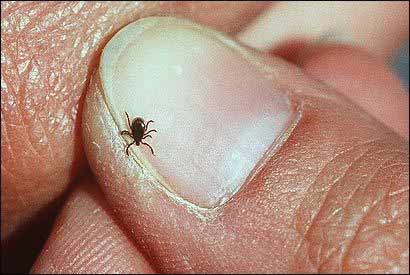 Zoonoses are diseases that can pass between animals and people. They’re relatively rare in this country. Rabies is probably the best known. Other examples include salmonella, ringworm, e-coli, Weil’s disease, orf, and Lyme’s disease.
Zoonoses are diseases that can pass between animals and people. They’re relatively rare in this country. Rabies is probably the best known. Other examples include salmonella, ringworm, e-coli, Weil’s disease, orf, and Lyme’s disease.
Lyme’s disease is the most common zoonose in the UK, according to government figures, but still rare- about a thousand cases being reported each year. It’s passed on by tick bites, and ticks are common in the New Forest. If you get bitten by a tick, you should keep an eye on the area of skin around the bite, as one of the most common signs of infection is a pink or red circular rash that develops around the bite some days afterwards. The rash is often described as looking like a bull’s-eye on a dart board.
The Health Protection Agency monitors reports of zoonoses, and produces annual reports about the numbers of cases.
Young Commoners
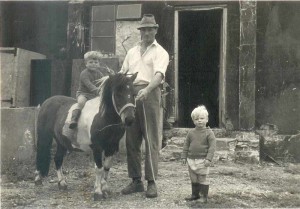 Young Commoners are important for the future of the New Forest. The Commoners Defence Association has set-up a Young Commoners group, and arranges educational events for young people who want to learn about commoning. The New Forest Trust played an important role in setting up the group.
Young Commoners are important for the future of the New Forest. The Commoners Defence Association has set-up a Young Commoners group, and arranges educational events for young people who want to learn about commoning. The New Forest Trust played an important role in setting up the group.
In olden days commoning skills were passed down ‘on the job’. There were always plenty of chores to keep children busy in the days before TV and computer games: chopping firewood, collecting fern, picking up acorns, clearing stones from hayfields, milking cows.
These jobs were done almost every day. And breaking-in ponies, or rounding them up, was an exciting and entertaining way for youngsters to spend the light summer evenings. Commoning was more of a necessity for some people in those days, rather than being a ‘lifestyle choice’ as it is for many today, so passing-on commoning know-how to children was an essential part of day-to-day life. Today, passing on the skills and know-how to youngsters is still important for keeping the culture of commoning alive for future generations. The museum at the New Forest Centre is full of displays to help young people get to know about the Forest and the commoning way of life.
X
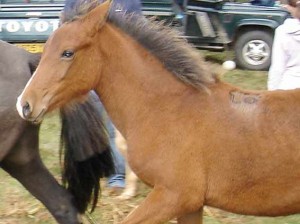 X is a letter that appears in many of the distinctive brand marks of the New Forest. Every commoner who turns out ponies, donkeys or cows must have a registered brand, and mark their animals in a certain way. The Agisters know the brands, so they can see who owns a given pony.
X is a letter that appears in many of the distinctive brand marks of the New Forest. Every commoner who turns out ponies, donkeys or cows must have a registered brand, and mark their animals in a certain way. The Agisters know the brands, so they can see who owns a given pony.
There’s a charge to register a brand. The idea is to discourage people from registering brands they never intend to use. A brand has to be a simple, clear design that is easy to see and describe, otherwise the brands might get confused.
If a person sells a pony to another commoner, the new owner is meant to add their brand behind the original. It’s possible to see ponies with several brands where they’ve been sold on a few times, but it’s unusual.
Foals shouldn’t be branded too young, otherwise the brand will grow along with the foal and end-up looking too big.
Nowadays cattle have to be ‘freeze branded’, but ponies and donkeys can still be hot branded. The branding iron is left in a fire until it becomes red-hot, when just a quick touch against the pony’s side will create a clear mark. The branding doesn’t appear to hurt the ponies or cause any lasting distress.
Welfare
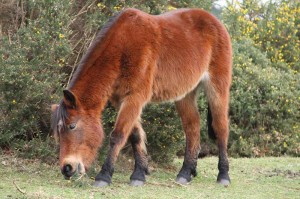 Welfare of the animals on the Forest is taken very seriously. The Verderers have rules for checking the condition of the animals. If an animal is too thin its owner has to take it off the Forest and feed it up before letting it out again. Animals also have to be taken off the Forest if they are sick or injured.
Welfare of the animals on the Forest is taken very seriously. The Verderers have rules for checking the condition of the animals. If an animal is too thin its owner has to take it off the Forest and feed it up before letting it out again. Animals also have to be taken off the Forest if they are sick or injured.
Twice a year the Verderers organise ‘welfare tours’ where experts from organisations such as the RSPCA and the British Horse Society tour the Forest to inspect the stock. The findings from the tours are reported on the Verderers’ website.
If you see any sick or injured ponies, donkeys, pigs, cows or sheep on the Forest you should get in touch with your Agister (who is the person on the ground responsible for welfare), or call the Verderers’ office on 023 8028 2052. Try to give them really clear information about what the animal looks like, and where it is. Saying that you’ve seen ‘a brown pony in the woods’ isn’t much help when there are hundreds of them!
Verderers
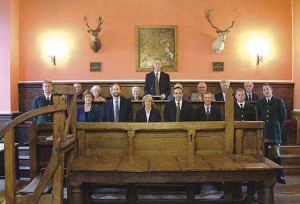 Verderers are the people who set the Forest byelaws and regulate the use of common rights in the Forest. The name comes from the French word ‘vert’, which means green. There are ten Verderers- half are appointed by the government, and half are elected by people with commoning rights.
Verderers are the people who set the Forest byelaws and regulate the use of common rights in the Forest. The name comes from the French word ‘vert’, which means green. There are ten Verderers- half are appointed by the government, and half are elected by people with commoning rights.
The five elected Verderers serve six year terms. The elections are staggered; two places will be up for the vote at one election, and three at the next, the elections being held three years apart.
In law, the Verderers have a similar status to magistrates. The ‘Verderers Court’ meets every month, except in August, at The Queen’s House in Lyndhust. The public can attend, and can raise issues for the Verderers to consider- that’s known as ‘making a presentment’ to the Court.
The Verderers set the marking fees, which are part of their byelaws. Verderers also have the power to block certain types of planning applications on Crown lands within the Forest. The Verderers have often acted as guardians of the Forest, protecting it from outside pressures.
The chairman of the Verderers is known as ‘The Official Verderer’, and is appointed by Her Majesty the Queen.

